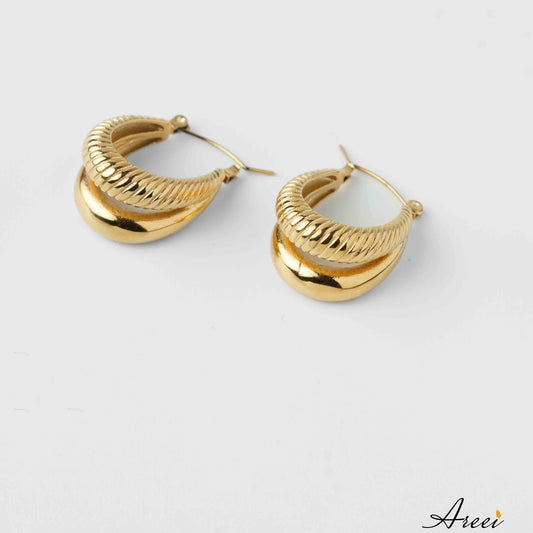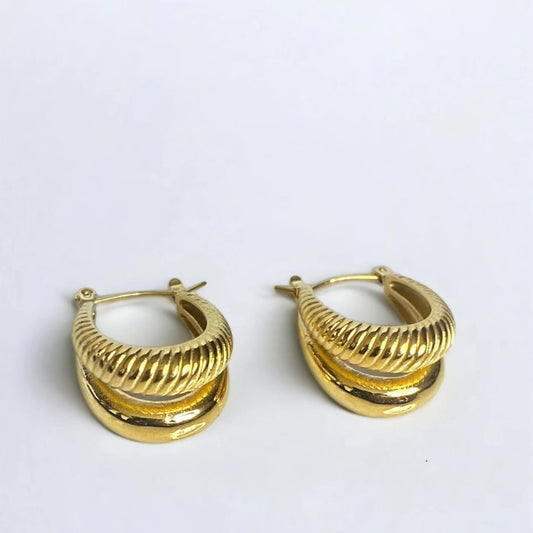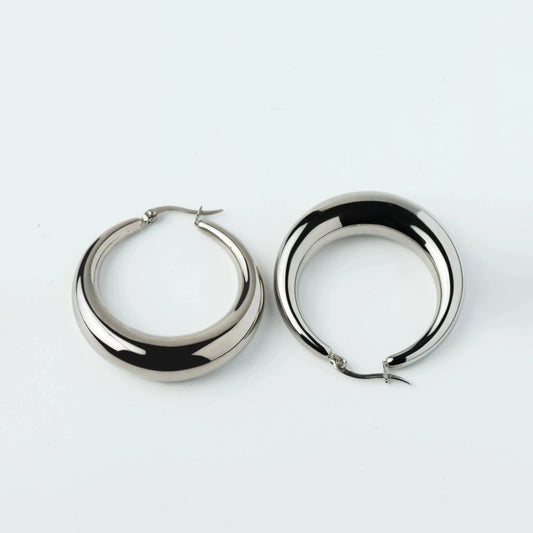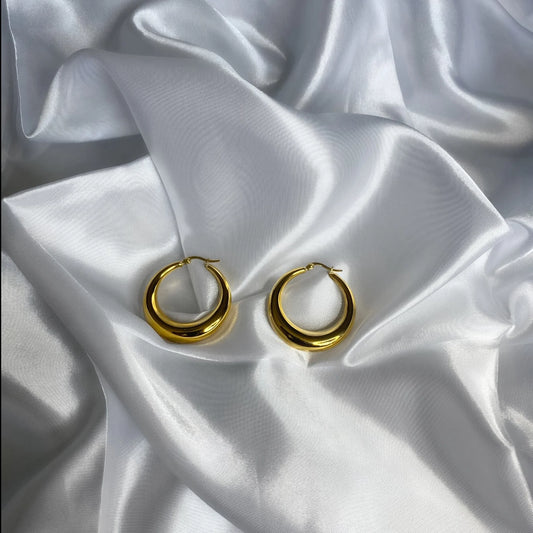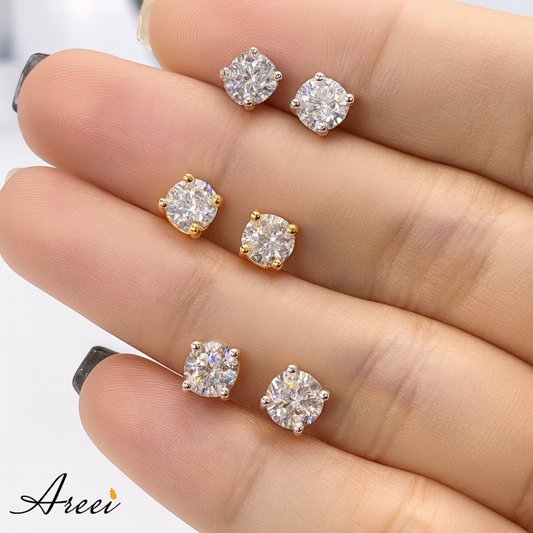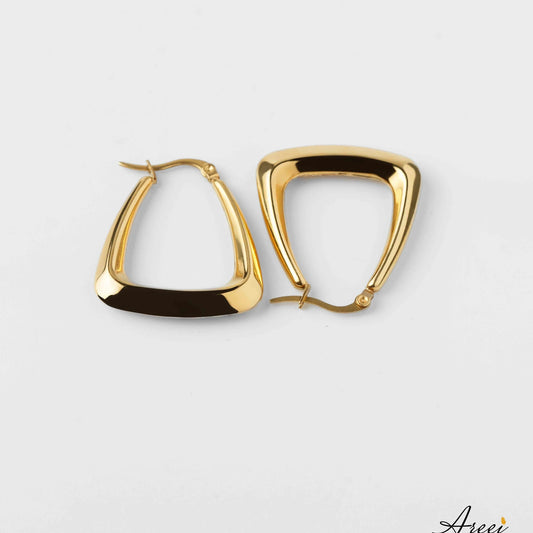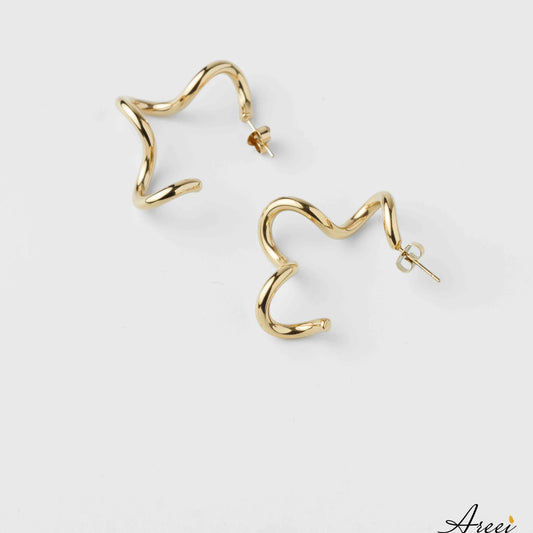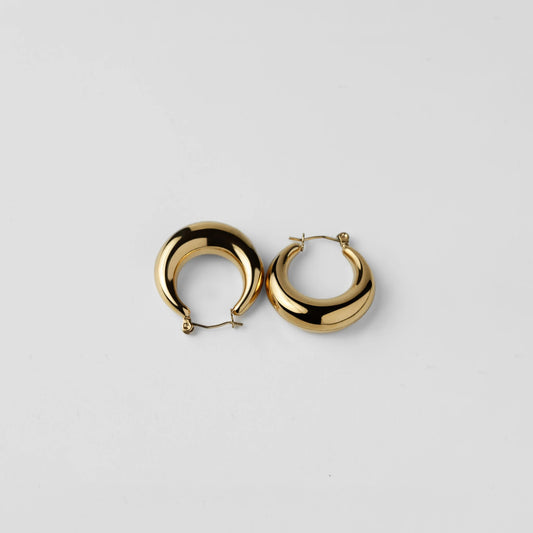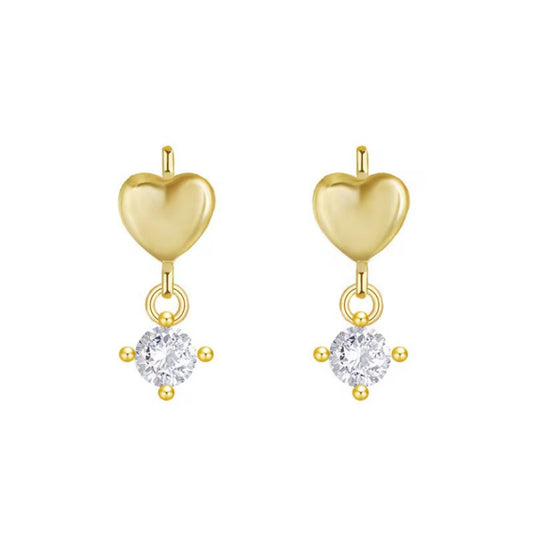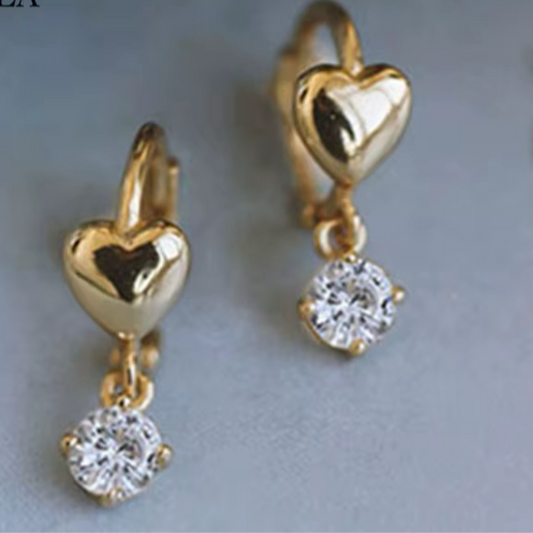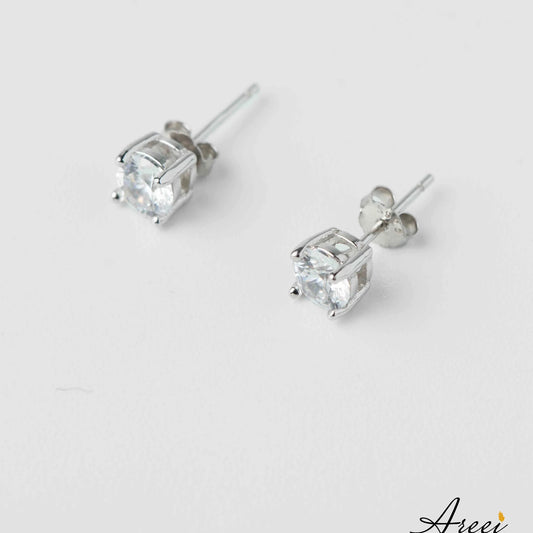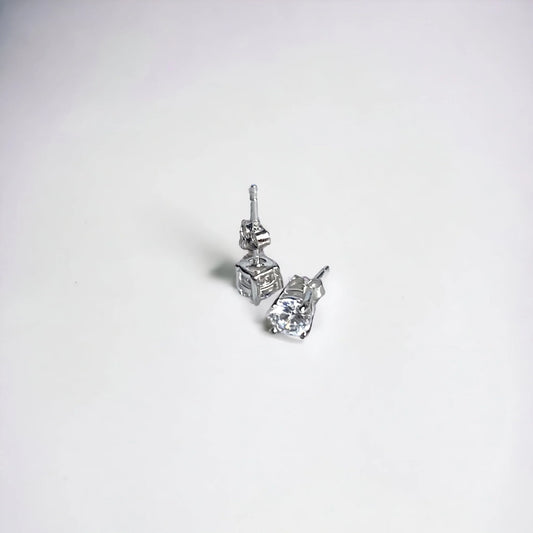Minerva Hoop Earrings from Areei
Jewellery problems always seem to happen at the worst possible moments. Whether it's a broken clasp minutes before a special event or a tangled necklace that refuses to cooperate, these issues can be frustrating. The good news is that many common jewellery problems have simple solutions you can implement at home using basic household items.
1. Fixing Tarnished Silver Jewellery
The Problem: Silver jewellery naturally tarnishes when exposed to air, moisture, and sulphur compounds, leaving it looking dull and discoloured.
Quick Fix Solutions:
- Toothpaste Method: Apply a small amount of non-gel toothpaste to a soft cloth and gently rub the tarnished areas. Rinse with cool water and dry thoroughly.
- Baking Soda Paste: Mix baking soda with water to create a thick paste. Apply with a soft brush, scrub gently, then rinse and dry.
- Aluminium Foil Trick: Line a bowl with aluminium foil, add hot water and a tablespoon of baking soda. Submerge the jewellery for 30 seconds, then rinse and dry.
Prevention Tip: Store silver jewellery in anti-tarnish pouches or with chalk pieces to absorb moisture.
2. Untangling Necklace Knots
The Problem: Delicate chains easily become knotted, especially when stored together or during travel.
Step-by-Step Solution:
- Place the tangled necklace on a flat surface with good lighting
- Apply a drop of baby oil or olive oil to the knot
- Use two safety pins or sewing needles to gently work the knot loose
- Work from the outside of the knot towards the centre
- Be patient and avoid pulling, which tightens the knot further
Professional Tip: For extremely stubborn knots, place the necklace in a small bowl with a few drops of oil and let it sit for 10 minutes before attempting to untangle.
Classic Gold Hoop Earrings from Areei
3. Repairing Loose or Missing Stones
The Problem: Stones can become loose due to worn prongs or adhesive failure, and small gems may fall out completely.
Temporary Fixes:
- Clear Nail Varnish: For slightly loose stones, apply a tiny drop of clear nail varnish around the setting. This provides temporary security until professional repair.
- Jewellery Cement: Available at craft stores, this specialised adhesive can reattach small stones temporarily.
- Professional Consultation: For valuable pieces or significant damage, always consult a professional jeweller.
Warning: These are temporary solutions. Valuable jewellery should be professionally repaired to maintain its integrity and value.
4. Fixing Broken Earring Backs
The Problem: Earring backs frequently get lost or break, making earrings unwearable.
Immediate Solutions:
- Pencil Eraser: Cut a small piece from a clean pencil eraser and push it onto the earring post
- Rubber Stopper: Small rubber stoppers from laboratory supply stores work excellently
- Emergency Alternatives: In a pinch, use a small piece of soap or candle wax
Long-term Solution: Purchase replacement earring backs from jewellery stores, craft stores, or online retailers. Keep extras in your jewellery box for future emergencies.
5. Dealing with Broken Clasps
The Problem: Bracelet and necklace clasps can break or become too loose to stay closed properly.
Quick Fixes by Type:
- Lobster Clasps: If the spring mechanism fails, use a small jump ring as a temporary closure
- Magnetic Clasps: Clean both sides with rubbing alcohol to restore magnetic strength
- Toggle Clasps: Ensure the bar is properly sized for the ring; bend slightly if too small
Temporary Solution: Use a small safety pin to create a temporary closure, threading it through the chain links.
6. Restoring Dull Gold Jewellery
The Problem: Gold jewellery can lose its shine due to soap residue, lotions, and daily wear.
Gentle Cleaning Methods:
- Washing-up Liquid Solution: Mix a few drops of mild washing-up liquid with warm water. Soak for 15 minutes, then brush gently with a soft toothbrush
- Beer Method: Soak gold jewellery in light beer for 10 minutes, then polish with a soft cloth
- Ammonia Solution: For heavily soiled pieces, mix one part ammonia with six parts water. Soak briefly, then rinse thoroughly
Important Note: Avoid harsh chemicals on gold-plated jewellery, as they can strip the gold layer.
Chunky Gold Huggie Earrings from Areei
7. Fixing Stretched Bracelet Elastic
The Problem: Elastic bracelets stretch out and become loose over time.
Repair Options:
- Re-stringing: Remove beads and restring on new elastic cord
- Knotting Method: Tie small knots between beads to reduce stretching
- Heat Treatment: Briefly expose elastic to low heat from a hair dryer to shrink slightly (use caution)
Prevention: Store elastic bracelets flat rather than hanging to prevent unnecessary stretching.
8. Removing Green Skin Discolouration
The Problem: Some jewellery leaves green marks on skin due to copper content reacting with moisture and acids.
Solutions:
- Clear Nail Varnish: Apply a thin coat to the jewellery parts that touch skin
- Jewellery Protector Spray: Commercial products create a barrier between jewellery and skin
- Wax Method: Rub clear candle wax on the jewellery surface
Skin Care: Remove green stains with lemon juice or white vinegar, then moisturise the affected area.
9. Fixing Bent Rings
The Problem: Rings can become bent or misshapen from daily wear or accidents.
Gentle Straightening:
- Ring Mandrel: If available, slide the ring onto a mandrel and gently tap with a plastic mallet
- Wooden Dowel: Use a wooden dowel of appropriate size as a form
- Professional Help: For valuable rings or significant damage, always consult a jeweller
Caution: Never attempt to straighten rings with stones, as this can damage the setting.
Gladiator Chunky Hoop Earrings from Areei
10. Preventing Future Jewellery Problems
Storage Solutions:
- Use individual pouches or compartments to prevent scratching and tangling
- Store jewellery in a cool, dry place away from direct sunlight
- Use anti-tarnish strips in storage containers
Maintenance Tips:
- Clean jewellery regularly with appropriate methods
- Remove jewellery before swimming, exercising, or applying lotions
- Have valuable pieces professionally inspected annually
When to Seek Professional Help
Whilst these quick fixes can solve many common problems, certain situations require professional attention:
- Valuable or antique pieces
- Jewellery with sentimental value
- Broken chains or complex mechanisms
- Loose diamonds or precious stones
- Severely damaged settings
Professional jewellers have specialised tools and expertise to ensure repairs maintain the jewellery's integrity and value.
Essential Jewellery Repair Kit for Your Home
Keep these items on hand for common jewellery emergencies:
- Clear nail varnish
- Soft-bristled toothbrush
- Microfibre cloths
- Safety pins
- Replacement earring backs
- Jewellery cleaning solution
- Small scissors
- Needle-nose pliers (jewellery grade)
Conclusion
Most common jewellery problems have simple solutions that don't require expensive professional repairs. With basic household items and a little patience, you can restore your favourite pieces to their former glory. However, always remember that these fixes are often temporary solutions, and valuable jewellery should ultimately receive professional care to maintain its beauty and worth.
By keeping a few essential items in your jewellery care kit and following these simple techniques, you'll be prepared to handle most jewellery emergencies that come your way. Regular maintenance and proper storage will also help prevent many of these problems from occurring in the first place.
Remember, when in doubt, consult a professional jeweller. The small cost of professional repair is often worth preserving the beauty and value of your cherished jewellery pieces.

